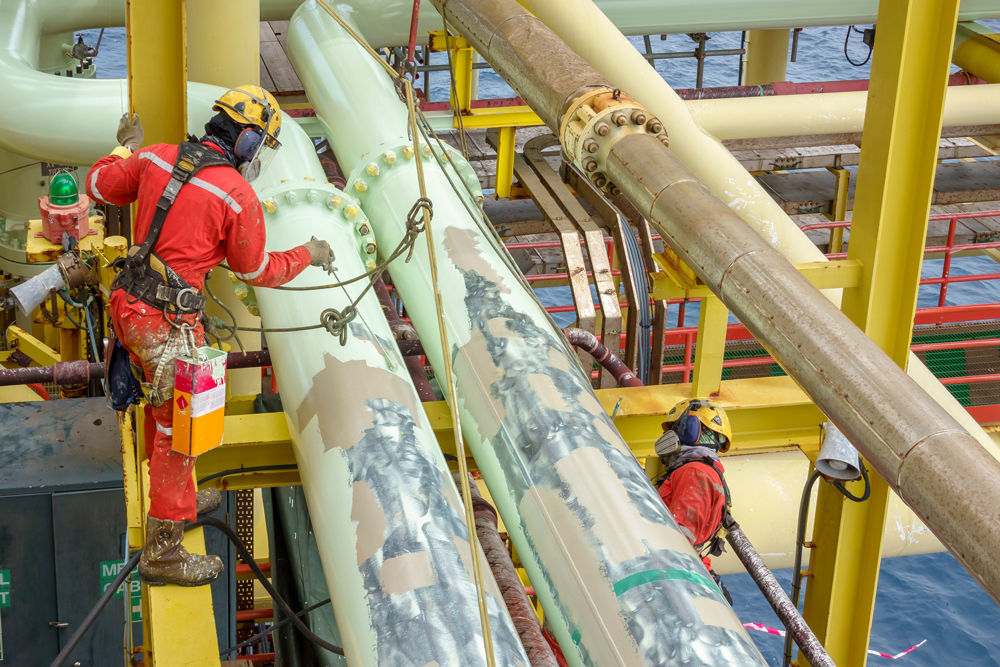April 2024, Vol. 251, No. 4
Features
Offshore Innovation Seen as Key to Overcoming Obstacles
(P&GJ) – As the offshore oil and gas sector enters the second quarter of the year, Europe will continue to be the biggest market for global offshore pipeline construction and related work.
Leading contributors to this include the large number of major energy consumers, such as Germany, France and the United Kingdom, as well as the proximity of the North Sea, which is among the leading production areas in region.
Other areas remain solid, especially in the major offshore basins like Brazil and Guyana. Petrobras has allocated $10.2 billion for Buzios Phase VI-XI — much of that going to floating production storage and offloading (FPSO) installations.
In Guyana, meanwhile, Esso Exploration and Production Guyana Limited have been commissioned by the government to operate and build a gas pipeline connecting two FPSO vessels.
The 50 MMcfd offshore pipeline will run 137 miles (220 km) to a 16-mile (25 km) onshore pipeline that connects to an LNG and NGL processing plant on the mainland, west of the Demerara River.
While several other factors contribute to the growing optimism around the global oil and gas offshore market — which appears to be entering into its best period since 2014 — technological advances have increasingly played a part in the upbeat forecasts.
While a shift toward renewable sources of energy may have lessened prospects for oil and gas, along with high initial investment cost and long duration of projects, cost reductions brought about by improving offshore equipment and methodologies have reduced the overall cost.
In its “Oil and Gas Upstream” report, researchers at ReportLinker called out a strong rate of growth between 2023 and 2030, tied to growing demand from end-user industries.
Among other findings, the “complete analysis” of offshore oil and gas upstream market trends, market insights, drivers and market restraints projected that the global offshore oil and gas rig market will increase in size at a steady compound annual growth rate (CAGR) of 5.69%, reaching $22.5 billion annually by 2027.
“The market is driven by the rise in the demand for oil and gas across the globe and increasing investments by the public and private players to boost the oil and gas industry,” according to the report.
Also weighing on the positive side were worldwide economic growth and rapid industrialization and urbanization which is generating the demand for fuel, and they are expected to propel the demand for the global offshore oil and gas rig market over the next five years.
The research report noted that several government authorities across the globe have been raising their capital expenditures (capex) to attract more energy investors into their countries.
U.S. Situation
In the United States, offshore oil and gas development in the Gulf of Mexico (GOM) hinges on federal government policies, global economics and the continued emphasis on renewables.
Several things slowing offshore pipeline projects include the constantly changing environmental regulatory picture and the ability to obtain permits from regulatory agencies, to ensure the protection of marine ecosystems and wildlife.
Environmental impact assessments are conducted to evaluate the potential environmental effects of pipeline installation and operation, and mitigation measures are implemented to minimize impacts on marine habitats and species.
Still, the market continues to see offshore oil and gas production in a favorable light, due to its importance to the U.S. economy.
Last year, the federal Interior Department’s Bureau of Ocean Energy Management (BOEM) said the Gulf continues to be the nation’s primary offshore source of oil and gas, generating 97% of all U.S. OCS oil and gas production.
At the outset of 2023, about 3,500 offshore drilling structures covered the Gulf of Mexico, with more than 3,200 remaining active. A clear majority (66%) of industry pundits in 2022-2023 were convinced that peak oil demand will come before 2030. However, a minority of investors remain bearish on oil and gas, predicting it will recede in importance in their portfolios as they get increased pressure to divest fossil fuel investments.
Current domestic U.S. efforts — focused on replacing declining production from legacy wells — are simply stressing the development of new wells in sufficient quantities to offset the declines.
Meanwhile, DeepOcean’s Mexican operation was awarded a contract a few months ago for the provision of post-lay trenching works on 30 km (19 miles) of pipeline offshore Mexico.
DeepOcean will execute the post-lay trenching works from the M/S Volantis subsea construction vessel. Volantis is equipped with DeepOcean’s high-powered jet trencher UT-1.
The Volantis is on charter from Volstad Maritime and was mobilized from Norway after the completion of an extensive vessel upgrade, which included the installation of batteries to reduce fuel consumption and emissions in line with DeepOcean’s commitment to reduce CO2 emissions by 45% by 2030.
This latest contract award comes on the back of over 300 km (186 miles) of completed trenching scopes offshore Mexico on pipelines ranging from 8-inch to 36-inch.
While the GOM offshore is of much concern to the United States, the future of offshore continues to be much broader and more complex, involving shallow, deep water and ultra-deep water plays in five different regions (Asia-Pacific, Middle East-Africa, Europe, North America and South America) and dozens of nations.






Comments